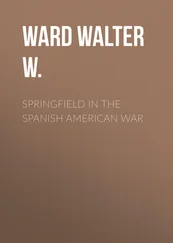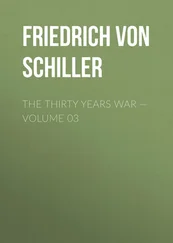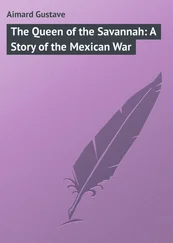The responsibility now resting upon the engineer was extremely heavy. A map prepared by Meade from data brought by a spy probably showed the Mexican works fairly well, but of course did not fully reveal the intricacies of the situation. Taylor had seen this map, and must have known everything thus far discovered by the reconnoitring officers, and he evidently saw nothing to forbid an infantry attack. Under the fire of the citadel and other fortifications, a close and detailed examination of the ground, screened not only by the maze already alluded to but by hedges, bush fences, trees and cornfields lying just outside the suburb, was impossible; and to send the troops back without an overwhelming reason in the face of the two armies, and look “Old Rough and Ready” in the eye, was unthinkable. Taylor’s order was therefore to all intents and purposes an order, not merely for a demonstration, but for an assault.10
So Garland, after marching for some time over and through all manner of obstructions, as Mansfield directed, kept on for a considerable distance under the fire of the citadel and redoubts, and at length saw that officer running ahead on foot at the northeastern angle of the town, and waving the troops on with his spy-glass. To obey this order involved turning to the right and then to the left—movements that disconcerted and scattered the raw Washington-Baltimore corps—and finally charging at a venture into the maze already described, but it was done; the Mexicans reinforcing the redoubt meanwhile with 150 men and an 8-pounder. Owing to the trend of the streets the Americans, now greatly reduced in numbers, took a course that led them to the right instead of the left, and failed to discover the throat of the redoubt, Mansfield’s objective. Caught in the maze and falling rapidly under an artillery and musketry fire that seemed to come from everywhere, they found themselves totally helpless. Bragg’s battery was thrown in, but it could accomplish nothing; and on Mansfield’s recommendation Garland fell back.10
Shortly before this, judging from the heavy fire that a serious engagement was on, Taylor had ordered Butler to advance with his Field Division. By a sad blunder three companies of the Fourth Infantry, which had been covering the mortar and howitzers, were sent ahead of this corps against the redoubt, and “almost in a moment”—as the official report admitted—a third of the men fell. The rest, including Lieutenant Ulysses S. Grant, then retired; and Quitman’s brigade, which now formed the left of the line, was ordered to support the regulars—in other words, renew the attack.10
With ample courage and enthusiasm the men advanced nearly a mile under the fire of the citadel—which, as Taylor privately admitted, “done considerable execution”—and before long under the worse fire of the redoubt in front; but they staggered in the smashing blast of lead and iron, their formation became very irregular, and after a time, though not within effective musket or rifle range, they began to fire at will. Colonel Davis, then some distance in advance on his iron-gray, Pompey, grew impatient at the waste of time, ammunition and life, and as the redoubt stopped firing just then, he cried, “Now is the time. Great God, if I had fifty men with knives I could take that fort.” Then he waved his sword, and called on his men to charge. Colonel Campbell, equally ignoring his brigade commander, did the same; and both regiments hurried on as groups and individuals, each man trying to outstrip the rest.10
Fortunately the time was ripe. Worn down by several hours of excitement and exertion—for noonday was now approaching—the Mexicans felt a reaction. The stubborn perseverance of the Americans daunted them. Captain Backus and about 100 men of the First Infantry, not receiving the order to withdraw, had climbed to the parapeted roof of a building about 130 yards from the redoubt and now persistently annoyed them. They looked for the reserves; but perhaps Garland’s operations prevented sending them, and certainly none came. Ammunition began to fail. The muskets were hot and foul. The cloth of the sand-bags took fire, and made the parapet extremely uncomfortable. Carrasco, the commander, who had run away at the Resaca, now openly took flight again; and a part of the garrison, formed to charge upon the Americans, were seen, or at least were supposed, to be retreating. A panic seized the troops, and almost in an instant the guns were abandoned and the redoubt stood nearly empty. A few minutes more, and tall, powerful McClung of the Mississippi Rifles leaped upon the parapet and waved his sword. By the same way or bursting through the sallyport, equally brave men of both regiments came close after him. Thirty or thirty-five prisoners were seized. An American flag went up; and after a brief conflict the tannery also—practically abandoned by the enemy—was taken.10
During Quitman’s advance the First Ohio approached the city farther to the right. It was well officered, for besides its colonel, Brigadier General Hamer, the Hooker of Chancellorsville, the Johnston of Shiloh, Major General Butler and Major General Taylor accompanied it; but it failed to accomplish anything. A second attempt was equally unfortunate, but when Taylor—evidently despairing of success—had ordered it out of town, word came of Quitman’s achievement. The regiment was then sent into the fight again. Garland’s remnant, still in the outskirts of the city, came up; Quitman’s troops were ordered to coöperate; and a determined effort was made to gain the rear of El Diablo. Both grand and pitiful that effort was. As an exhibition of pluck it could hardly have been surpassed. Taylor, fighting on foot, matched Richard Coeur de Lion storming Front de Boeuf’s castle; and his intrepidity was so flawless and unforced that courage appeared to all round him the easy and only way. To die under such a leader seemed the acme of living. It was not war, but it was grand fighting.10
“We were not many, we who stood
Before the iron sleet that day;
Yet many a gallant spirit would
Give half his years if but he could
Have been with us at Monterey.
And on, still on our column kept
Through walls of flame its withering way;
Where fell the dead, the living stept,
Still charging on the guns which swept
The slippery streets of Monterey.”
But the enemy, seldom visible, appeared to be everywhere. A large part of the groping Americans got in front of Purísima bridge, and went down fast under a rain of bullets from the tête de pont , while Captain Gutiérrez, who had now masked his gun on the opposite bank, poured grape and canister upon them at short range. Ridgely came up and fired several times at the bridgehead, but without effect. Among our troops, as one of the surgeons wrote, “All was confusion.” Smoke hid the outlook; and the Mexican shots, breaking the limestone, mortar and adobe, raised a blinding dust. The assailants did not know where to turn or what to do. Taylor, Butler, Hamer, Quitman and other officers shouted orders that few could hear amidst the uproar, and perhaps fewer could reconcile. It was proposed to cut through from house to house, but the necessary implements had not been brought. Ridgely’s and Bragg’s batteries and the captured Mexican guns fired on El Diablo, and finally the 24-pound howitzers were brought in; but nothing could be accomplished in that way. Many of the best and the bravest fell; and eventually, at about five o’clock, the Americans retreated from all of Monterey except the Tenería redoubt and a few adjacent buildings.10
So the fight ended. It had been one long scene of gallantry, confusion, mistakes and waste. Lieutenant D. H. Hill, afterwards General Hill of the Confederate army, wrote in his journal on learning the details: “It seems that every sort of folly was committed.” To pitch handfuls of infantry into an unknown maze of obstacles, fortifications and cannon as if they had been fighting Indians in a Florida swamp, and to send field batteries into narrow streets—in the suburb crooked, too—against heavy stone works and roofs filled with protected marksmen was extraordinary. And, it was credibly reported, Taylor did more. He ordered Ridgely out into the open to try conclusions with El Diablo. Ridgely was absolutely fearless. To satisfy the General he went out himself and reconnoitred, but he would not lead his battery to destruction. The Tennessee regiment was needlessly taken back and forth six times within range of the citadel.10
Читать дальше












